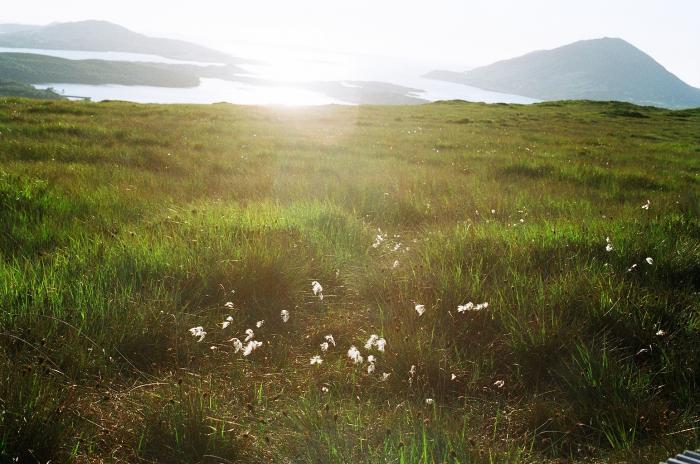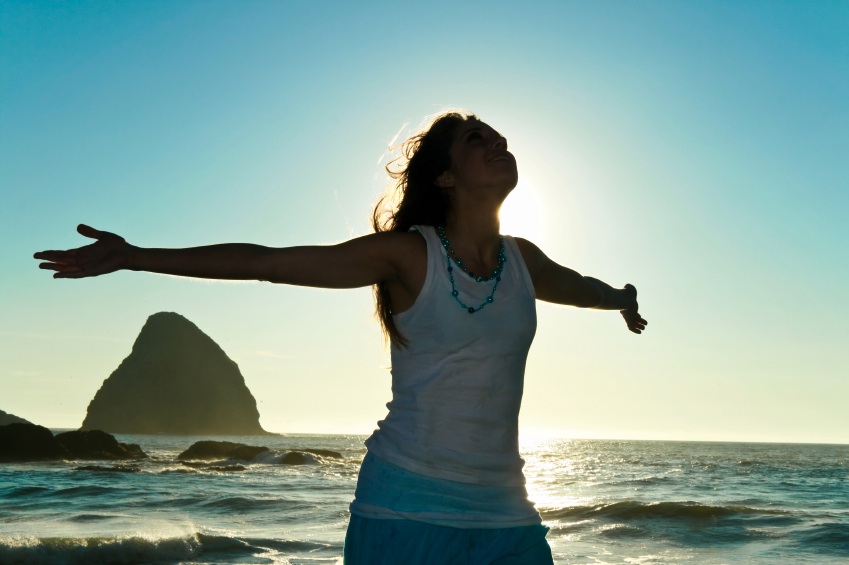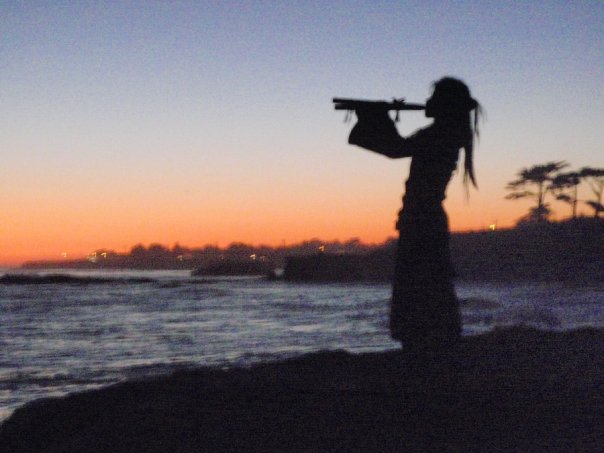April 30, 3013: TED Talks on Listeningwww.ted.com/playlists/92/listen_up.html There are 8 talks to the playlist on listening. There is so much so listen to, so much to pay attention to. May favorites are by Ernesto Sirolli: Want to help someone? Shut up and listen! and of course Evelyn Glennie: How to Truly Listen (she is a deaf percussionist)
Viewing entries in
Posts
There are two movements in me: a movement of energy from above which, if I am free enough to listen to it, penetrates and acts through me; and another movement, dispersed and without order, which animates my body, my thought and my feeling. The two are very different, and I cannot bring them into accord. Something is missing. My attention is unable to follow them at the same time. Sometimes it settles on the void, the infinite, on emptiness; sometimes on the form. When the attention settles on emptiness, it is the form that dissolves. When the attention is on the form, the sense of the void disappears. It is necessary to pay the price.
Can I be free enough to receive what is unknown, behind all my avid movements toward the outside? This unknown, which is behind and beyond, cannot be perceived by my senses. I am able to see a form, but I cannot know through my senses the true nature of what it is. My thinking knows forms but cannot grasp the reality behind them, the reality of what I am, which appears just before and after each thought or feeling. What we experience—sounds, forms, colors, thoughts—cannot exist without a background. But this background cannot be perceived by my senses. It remains unseen, not experienced. The forms and the reality are parts of a single whole, but they exist in different dimensions. The real is not affected by the material of my thinking and cannot absorb it. Reality is on another level. Yet the material of my thought absorbs the real and constructs illusions based on forms. The form acts as a veil hiding the reality. When the reality of myself is not felt, I cannot help but believe in this illusion and call it “I.” Nevertheless, the illusion is only a mirage which dissolves the moment silence is established.
I have to see that there is a space between thoughts, a void that is reality, and I need to remain as long as possible in this space. Then another kind of thinking appears, clear and intelligent, a thought of another level, another dimension. I see that the usual thought, which is limited and measureable, can never understand that which is beyond measure. With my usual vision I see the physical aspect of the world. With this other vision I see another dimension in which the immeasurable has its own movement. If my centers are absolutely still, without any movement, the energy can pass through them. I see what I did not see before. I see what is. In this seeing there is a light, a light that is not ordinary. Things appear and disappear in the void but are illuminated, and I am no longer so taken by them. In this seeing I can understand my true nature and the true nature of things around me.
It is not a matter of fighting indifference or lethargy or anger. The real problem is vision—to see. But this seeing is only possible if we return to the source, to the reality in us. We need another quality of seeing, a look that penetrates and goes immediately to the root of myself. If we look at ourselves from outside, we cannot penetrate and go deeper because we see only the body, the form of the seed, its materiality. Reality is here, only I have never put my attention on it. I live with my back turned to myself.
Jeanne de Salzmann
I must begin with a statement: I love practicing yoga with men, teaching men, and learning from men, but ... there is a special energy to a women only yoga practice. As I mature as a person and get to know myself in a real and honest way, I am increasing interested (especially since becoming a mother) in developing my own personal 'power' as a woman. This power is subtle, soft, gentle, kind, cooperative, loving, nurturing, and empowered because it does not come from the outside (my culture, my family of origin, my place in human history, how I "should" behave), but from within. Approaching our asana practice with this internal focus is an essential element of practicing in such a way that honors the Feminine (for both women and men). My first inclination here is to give a something like "8 things for women to consider when practice yoga" (you could read this article by Angela Farmer if you want that), but that is too linear. Instead, let me share in a circular way my experience of practicing with a eye for the Feminine. For me, I wish to cultivate a deep and intuitive connection to my deeper Self. My essential nature that is neither masculine or feminine but a symbiotic and fluid relationship of the two. But, beyond that, I have been given a feminine form and with that comes unique feminine powers and responsibilities of which I am both proud of (mama-hood) and challenged by (damn that chocolate need or wayward emotional outbursts) and I desire to live in harmony with myself as an ever changing and often unpredictable being. In the early stages of my relationship with my husband, Nate Bettger, we would say (and we still do) that he was the shore to my ocean. He being solid, consistent, reliable and me being mutable, changing, sometimes calm and sometimes stormy. What we like about this metaphor is the place where we meet, the shore. The ocean pulls into her sand, stones, and stability from the shore and changes the shore with her tides. I love this. When I step onto the mat, there is always a moment of surrender, like slipping into a pool or water or diving under the waves. Then there is slow and steady pulsation where I infuse the rhythmic flow of my breath with into the rhythmic flow of my body and connect. Then I find myself beginning to get lost in this rhythm and I must pause to find stillness and composure so as not to get swept out to sea, and stay within the waves of breath. I work, and 'paddle' as the waves begin to build and build, and then there is a peak, and my body, breath, and mind surrender back into the unhindered and circulating flow of Prana as I slip into savasana. For the previous hour or two I am in my own power, experiencing my own Beauty (not a surface or pladitudial beauty, but a true, almost holy beauty that comes from deep recognition), and I am free. I am free to experience the Shakti, the creative force, that I hold and to witness how that Shakti is manifest in my practice and I watch it begin to ripple more and more into my daily life. My sense of lack, unworthiness, or disappointment with myself is replaced with a sense of clarity, peace and sincere reverence for myself and all that lies dormant and ready to awaken within me. Hips opening helps this, but its the nurturing, kind, loving, and energizing that comes from a deep recognition that brings about beautiful and lasting changes that allow me to more fully step into my own power.
By Kat
...from Wild Human, adapted from Nature and the Human Soul by Bill Plotkin, phd Stand still. The trees ahead and bushes beside you Are not lost. Wherever you are is called Here, And you must treat it as a powerful stranger, Must ask permission to know it and be known. The forest breathes. Listen. It answers, I have made this place around you. If you leave it, you may come back again, saying Here. No two trees are the same to Raven. No two branches are the same to Wren. If what a tree or a bush does is lost on you, You are surely lost. Stand Still. The forest knows Where you are. You must let it find you. —“Lost” by David Wagoner
Wisdom traditions worldwide say there’s no greater blessing than to live the life of your soul, the source of your deepest personal fulfillment and of your greatest service to others. It’s what you were born for. It’s the locus of authentic personal power — not power over people and things, but rather the power of partnership with others, the power to cocrete life and to cooperate with an evolving universe.
Before you find your ultimate place, you are, in a sense, lost. You have a particular destiny but don’t know what it is. It’s like being lost in a forest, as in poet David Wagoner’s image (in his poem). You can begin or deepen your relationship to soul in the same way the poet advises you to commune with the forest. None of the nonhumans in the forest — or the world, more generally — are lost. Each one is precisely in its true place, and each one knows every place in the forest as a unique place. They are doing something you do not yet know how to do. You could apprentice yourself to them. The forest, the world, knows where you are and who you are. You must let it find you.
If you don’t yet have conscious knowledge of your soul, you haven’t yet learned the power of place — or the power of Here. To acquire this power, you must first get to know more thoroughly the place in life you already inhabit. This place consists of your relationships and roles in both society and nature. This is the place in which you are lost, in which you find yourself to be, and from which you can, eventually, find your self. You must treat this place you’re in as a “powerful stranger,” as Wagoner suggests, and educate yourself more fully about what it is to inhabit any place. To inhabit a particular place is to have the potential to do and observe the specific things that one can do and observe in that place. This knowledge about inhabiting a place will help you shift to other places in life (which is done by changing your relationships and roles) and to get to know what it’s like to inhabit those places. You’ll discover that some places feel more like your true place, closer to your ultimate place. By developing your sensitivity about place in this way, you can gradually move to your ultimate place. . . .
Your soul is your true home. In the moment you finally arrive in this psycho-ecological niche, you feel fully available and present to the world, unlost. This particular place is profoundly familiar to you, more so than any geographical location or any mere dwelling has ever been or could be. You know immediately that this is the source, the marrow, of your true belonging. This is the identity no one could ever take from you. Inhabiting this place does not depend on having anyone else’s permission or approval or presence. It does not require having a particular job — or any at all. You can be neither hired for it nor fired from it. Acting from this place aligns you with your surest personal powers (your soul powers), your powers of nurturing, transforming, creating; your powers of presence and wonder.
The first time you consciously inhabit your ultimate place and act from your soul is the first time you can say, “Here” and really know what it means. You’ve arrived, at last, at your own center. As long as you stay Here, everywhere you go, geographically or socially, feels like home. Every place becomes Here.
... in happiness, must frequently change, Confucius said. My husband Nate Bettger shared this on his blog recently and it really got me thinking about change. I like happiness and I am comfortable with change. In fact, change is something I relish in and enjoy. I love change. Anyone who has been to my yoga class can attest to that. So, change. Nate and I are heading to Portland to live for a year. He to complete his residency as hospital chaplin and me to, well, I am not sure. I plan to take a fallow year, or a year of jubilee (Nate's phrase, but I think it's from the Bible) and let my yoga teaching fields rest and wait for the creativity to rise up and take me on the next journey. I want to live a life that is full of yoga. On the mat daily, but what I really want to do is experience the Yoga of Life. This has already begun, but I'm sensing that this website will change to accommodate that. I am open and I am excited!













